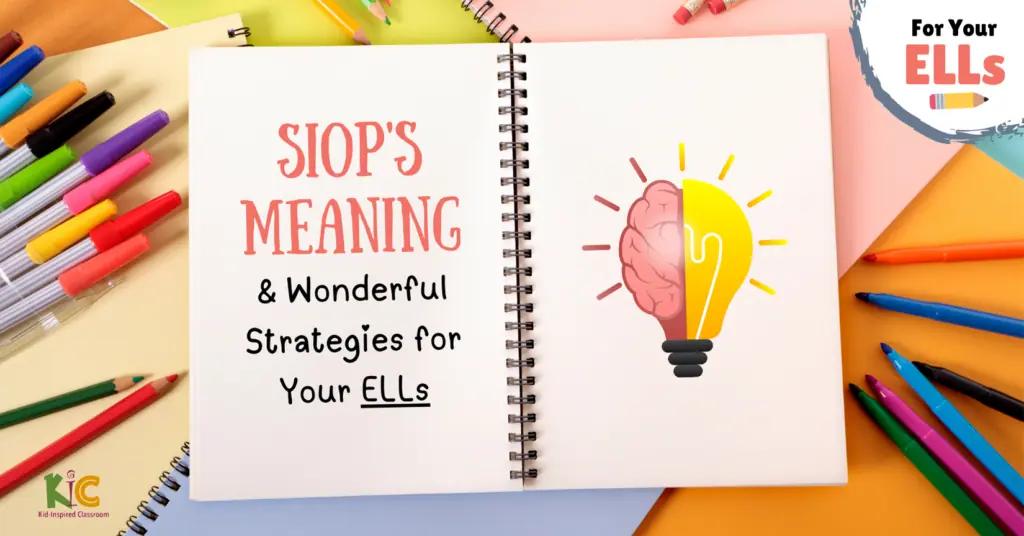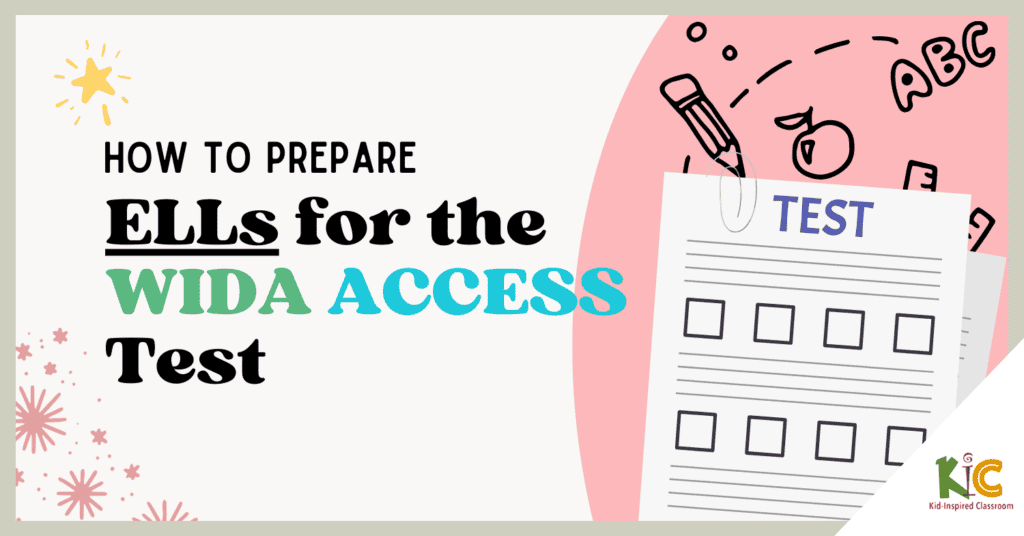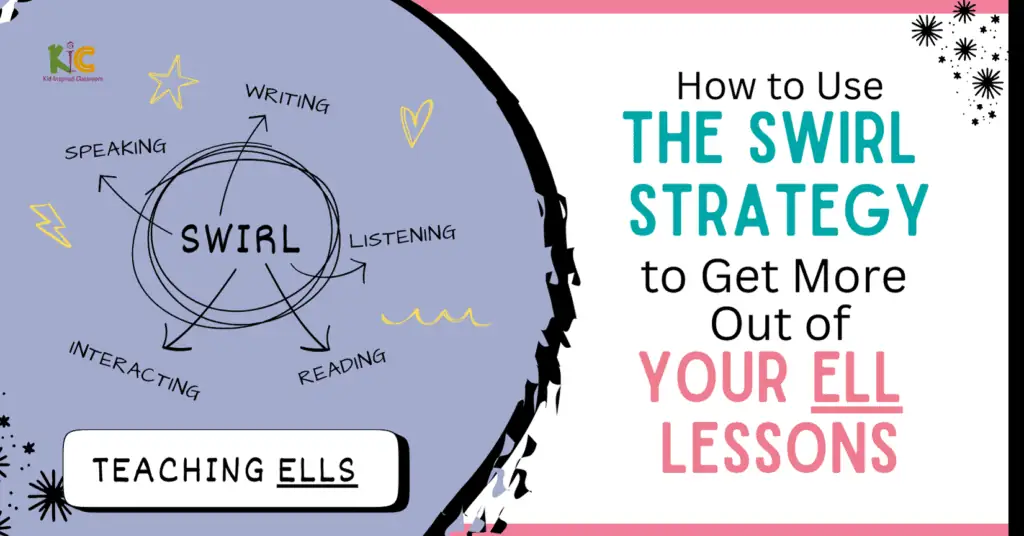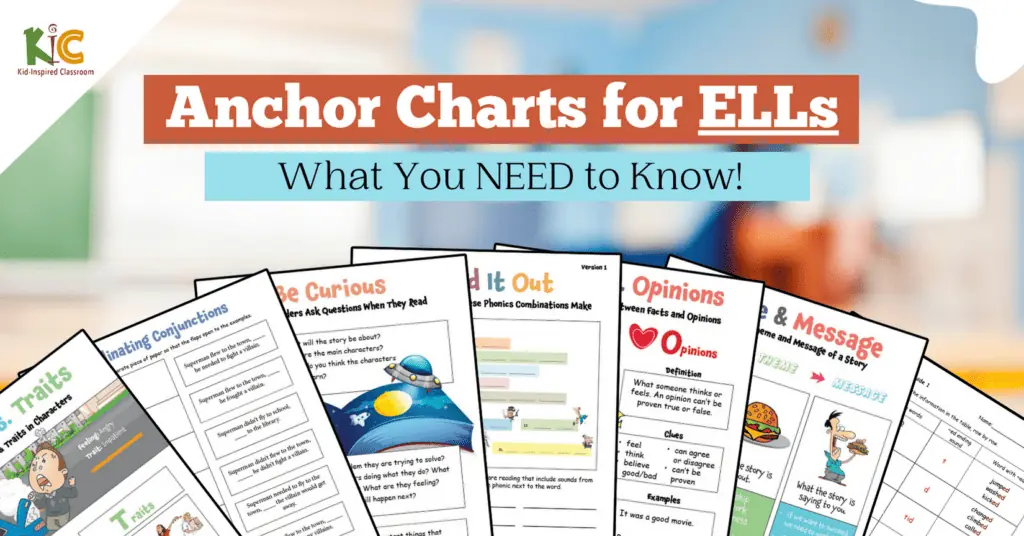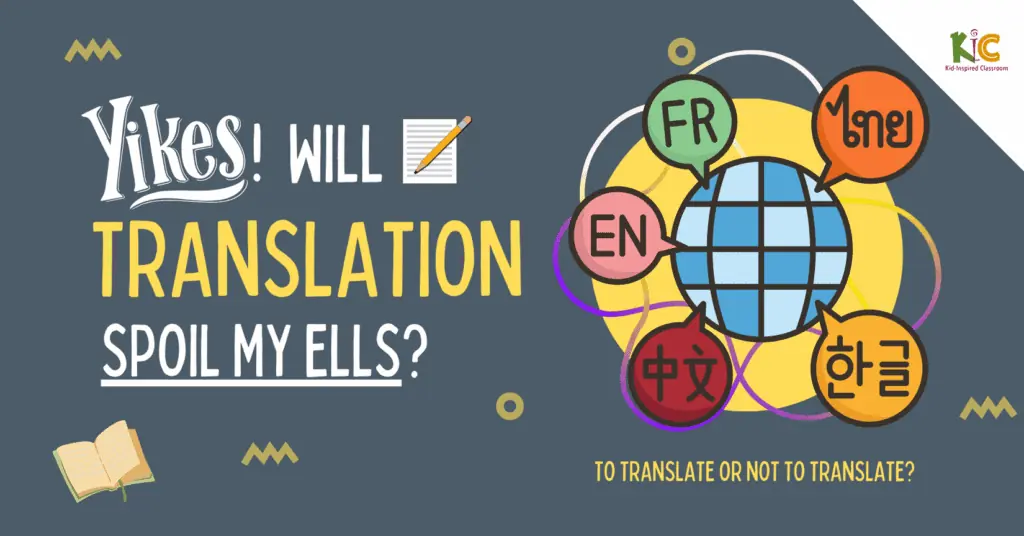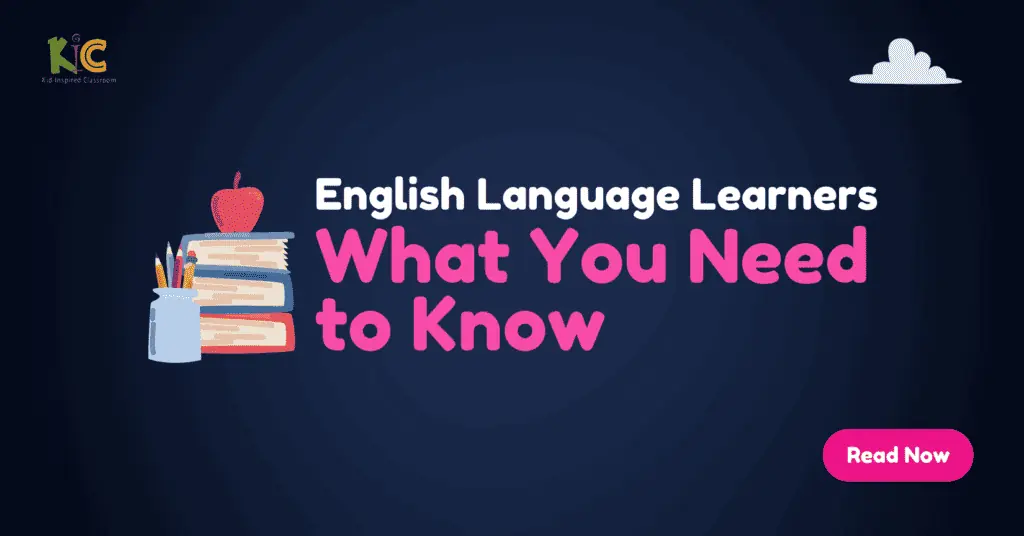
Simply put…
English Language Learners (ELLs) are students who are learning English.
But…
…that is the only simple part about working with English learners. There are an enormous number of factors to consider when it comes to ELLs.
In this article, I’ll break it down for you and give you some of the best tips out there for getting started.
Let’s dive right in!
English Language Learners – An Overview
First…
In this article, we’ll be discussing English learners in the United States, a native English speaking environment, but the tips and strategies covered can be adapted for other contexts as well.
There is some overlap in the challenges teachers face when working with English learners in non-native English speaking countries as well as in native English-speaking countries, but there are some big differences as well.
Students in non-native English speaking countries do not usually have the same pressure to teach grade-level content in English to their students, for instance.
ELLs arriving in the United States have:
- Diverse linguistic and cultural backgrounds
- Widely varying levels of English proficiency
- A dizzying range of educational backgrounds
- Differing family dynamics
It’s important to note that ELLs are not a homogeneous group. They have different backgrounds, experiences, and language abilities. Some may have had limited exposure to English, while others may have some basic understanding of the language. Some may be fluent in their native language, while others may struggle with literacy in both their native language and English.
Teaching ELLs requires an understanding of their unique backgrounds as well as a good grasp of their personal needs. That’s why one of the first steps to working with ELLs is to spend time getting to know them and building trust with them. It’s important to create a supportive and inclusive learning environment that recognizes and values their diversity. Very little else can happen until newcomers feel safe and accepted.
Who are English Language Learners?
There are a number of different terms used to refer to English Language Learners as well as the process of teaching them. Here are some of the most common:
- ESL – English as a Second Language
- ELL – English Language Learner
- EL – English Learner
- MLL – Multi-Lingual Learner
- ESOL – English for Speakers of Other Languages
- EFL – English as a Foreign Language
In a recent study, it was revealed that there were over 4.8 million students in the United States who were classified as English language learners (ELs). Almost all of these students, 97%, participated in programs designed to teach them the English language.
- The racial and ethnic makeup of ELs was different from that of the overall student population, with Hispanic or Latino students comprising more than 75% of all ELs, while Asians and White students accounted for 11% and 6% of ELs, respectively.
- Only 10% of all students were ELs, but this percentage was higher for certain groups such as homeless children, eligible migrant children, and those served by Title I or Targeted Assistance School Programs.
- Additionally, nearly 14% of all ELs had a disability, with the most common disabilities being specific learning disabilities and speech or language impairments.
This data is based on information from https://www2.ed.gov/datastory/el-characteristics/index.html.
Of course, the United States is not the only place with English Language Learners. There are other native-English speaking countries with large English Language Learner populations as well including Canada, England, Australia, and South Africa.
Moving away from native-English speaking countries, many to most non-native English-speaking countries around the world require English as a second language in schools.
How we teach depends greatly on the context we are in. English language learner needs in a native-English speaking country differ quite a bit from those in a non-native English-speaking country. Fortunately, with a few tweaks, most of the strategies we will discuss below apply regardless of the context.
The biggest difference is that English language learners in a native English-speaking context will usually need to access grade-level content that may be far above their English proficiency level.

New to Teaching English Language Learners?
If you’ve never worked with English Language Learners before, it can be a challenge. If you persevere though, you’ll find this to be some of the most rewarding teaching you’ll ever do.
Here are some of the reasons teachers new to working with English Learners struggle:
- Language Barriers – They think they have to speak the native languages of their students in order to help them. (Tip: You don’t. There are lots of strategies that work wonderfully regardless of whether you speak a student’s native language.)
- Monolingual – They have not learned a second language themselves and struggle to understand what it takes. (Tip: Take some lessons in a second language to get a feel for what it’s like!)
- Lack of Related Experiences – They have not moved to a different country with a different culture before and struggle to relate. (Tip: You don’t need to move to a different country to understand the struggles of interacting with other cultures. You probably already have some experience with this that you didn’t consider and you can listen to the stories of your ELLs to help fill in the gaps.)
- Time – They find that they have far less time than they would like to have. (Tip: This is probably the toughest. Remember that you can’t do it all. Focus on what will make the biggest difference and let the rest go.)
- Pushback – Content teachers are already very busy with their regular students and are not always very accommodating to English learners in their classes or the ELL teachers trying to support them. (Tip: Content teachers are busy, too, and there are tons of demands coming from all different angles. Focus on understanding them and encouraging them and then share strategies that they can implement that will benefit all of their students as well as their ELLs if there is pushback from them.)

Pushing In to the Classroom or Pulling Out
Pushing In is when you go into content classrooms with a content teacher in order to co-teach the class or assist with the English learners in the class. How this works out depends a lot on the stance of the content teacher with whom you’re working. There are a number of different models that can be used for co-teaching with content teachers as well as tips for how to better collaborate together for the benefit of all the students. This strategy can be incredibly effective when done well and helps ELLs directly engage with the same content that their peers are engaging with. This often means better results in less time. If not done well, this can result in a lot more pressure and stress for English learners.
- Resource: ELL Co-Teaching Models for Meaningful Collaboration – You’ll find downloadable co-teaching lesson planning pages here as well!
Pulling Out is when you meet with your English learners separately from the rest of their fellow students in standalone lesson periods. These time periods can last anywhere from 10 to 45 minutes. You can focus in more on the specifics of what students need in these sessions but being removed from the regular content classroom can cause students to fall further behind.
Tips for Teaching English Language Learners
Teaching English Language Learners can be a challenging but rewarding experience. Here are some tips to help you teach ELLs effectively:
1. Understand your students’ backgrounds and language abilities
To effectively teach ELLs, you need to understand their backgrounds and language abilities. Take the time to learn about their cultures, traditions, and languages. This will help you to better understand their needs and to tailor your teaching approach accordingly. You will also want to clearly assess their English proficiency levels.
- Resource: A good assessment like the Kid-Inspired ESL assessment can be a huge help.
2. Use visual aids and hands-on activities
ELLs often benefit from visual aids and hands-on activities that help to reinforce concepts and vocabulary. Use pictures, charts, and diagrams to help illustrate your lessons. Incorporate hands-on activities, such as role-playing or group work, to help students practice their English skills in a fun and engaging way.
- Resource: There are a bunch of specific examples in this article: 63 Supports for English Language Learners.
3. Simplify your language
When teaching ELLs, it’s important to use clear, simple language. Avoid using complex vocabulary or sentence structures that may be difficult for them to understand. Use short, simple sentences and avoid idiomatic expressions that may be confusing. When you do use more complex vocabulary and sentence structures, be intentional about them. Write them in the board and get students practicing them in Turn, Pair, Shares or other activities.
- Resource: Using Academic Language with Your ELLs.
4. Encourage interaction and participation
Encourage ELLs to interact with each other and with you. Create opportunities for them to practice their English skills in a supportive and inclusive environment. Use group work and pair work to encourage collaboration and participation. Our ELLs want to interact; they just don’t always know how or are feeling nervous. You can use “wait times” to give them a second to form their thoughts or provide scratch paper to prepare a few ideas first. With scratch paper, you can easily see if any students need a little help before you give them the opportunity to share. The goal should be to keep all students busy at all times with as little waiting around with nothing to do as possible.
- Resource: Check out the book Kid-Inspired Teacher for loads of tips on how to organize a class for tons of student interaction and participation.
5. Use Consistent Routines
Routines are the backbone of your classes. Solid routines will help your students feel more confident and will also save you loads of time both in preparation and in class. What do your students do when they first come in? What is your overall class structure? My favorite is the Gradual Release of Responsibility model where you practice content at the whole group level, then in small groups, and then finally as individuals. This requires that your curriculum is built to make routines easy, so that you can have a consistent overall class structure each class as well reuse go-to engaging activities that you and your students love and find effective. Too often, teachers end up spending more than half of each and every class explaining what to do. Students disengage and make very little progress in classes like that.
- Resource: You can check out the Kid-Inspired ESL Curriculum Membership to find a curriculum and loads of resources that will make routines a lot easier.
Next Steps – More Resources for Working with English Learners
More Strategies & Activity ideas:
- Bookmark this site so that you can come back any time for more strategies and activity ideas.
- How to Teach ESL – A Comprehensive Guide ->
- ESL Activity Ideas – Organized by Language Goal ->
Kid-Inspired Teacher – Available on Amazon
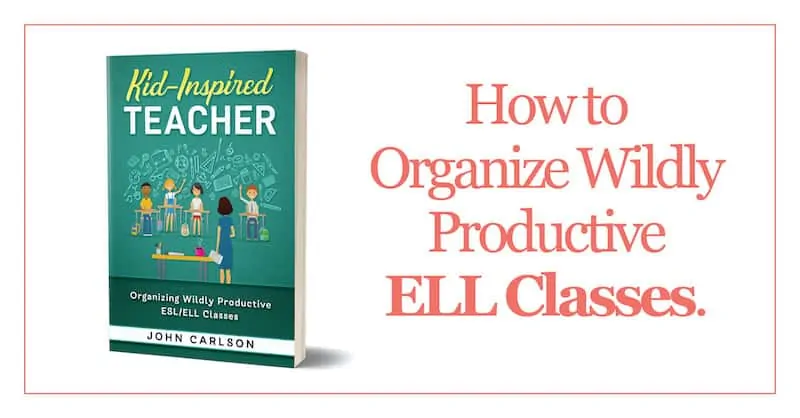
Kid-Inspired Teacher – How to Organize Wildly Productive ESL/ELL Classes
Kid-Inspired ESL Curriculum Membership
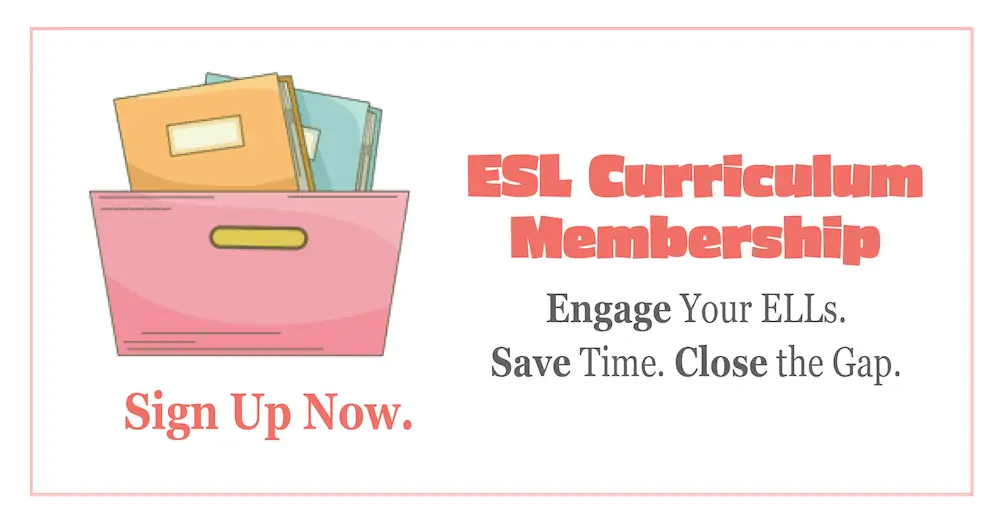
Joining the ESL Curriculum Membership gives you access to 1000s of engaging, consistent, and effective teaching resources for your students.
